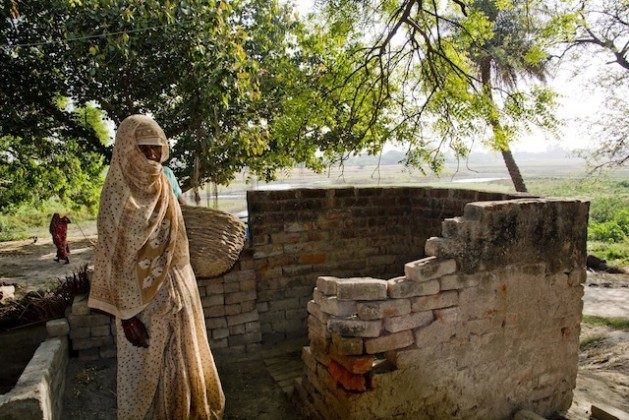1 in 2 Humans Cannot Celebrate World Toilet Day - This Is Why

Did you know that half of the world’s population do not have toilets? And that, globally, at least 2 billion people use a drinking water source contaminated with faeces? And that every day, over 700 children under five years old die from diarrhoea linked to unsafe water, sanitation and poor hygiene?
This is the dramatic, hushed reality of 3.6 billion people who don’t have one that works properly.
“Who cares about toilets? The UN raises this question as the starting point of this 2021 Campaign for World Toilet Day, marked every year on 19 November.
The World Day raises awareness of all these 3.6 billion people living without access to safely managed sanitation, posing dangerous health problems.
It is as simple as staggering: when some people in a community do not have safe toilets, everyone’s health is threatened, as poor sanitation contaminates drinking-water sources, rivers, beaches and food crops, spreading deadly diseases among the wider population.
Devastating consequences
This year’s theme is about valuing toilets. The campaign draws attention to the fact that toilets – and the sanitation systems that support them – are underfunded, poorly managed or neglected in many parts of the world, with devastating consequences for health, economics and the environment, particularly in the poorest and most marginalised communities.
On the other hand, the advantages of investing in an adequate sanitation system are immense, says the UN. For instance, every 1 US dollar invested in basic sanitation returns up to 5 US dollars in saved medical costs and increased productivity, and jobs are created along the entire service chain.
For women and girls, toilets at home, school and at work help them fulfill their potential and play their full role in society, especially during menstruation and pregnancy, the world body informs.
Even though sanitation is a human right recognised by the United Nations, a massive investment and innovation are urgently needed to quadruple progress all along the ‘sanitation chain’, from toilets to the transport, collection and treatment of human waste.
“As part of a human rights-based approach, governments must listen to the people who are being left behind without access to toilets and allocate specific funding to include them in planning and decision-making processes.”
Need to know more?
According to World Toilet Day, an estimated 673 million people have no toilets at all and practice open defecation as of 2017, while nearly 698 million school-age children lacked basic sanitation services at their school.
“At the current rate of progress, it will be the twenty-second century before sanitation for all is a reality.”
But there is another added problem: the plight of sanitation workers. In fact, countless sanitation workers in the developing world work in conditions that endanger their lives and health, and violate their dignity and rights.
To mark World Toilet Day, the International Labor Organization (ILO), World Bank, World Health Organization and WaterAid launched a joint report highlighting the unsafe and undignified working conditions of sanitation workers around the world.
Sanitation workers involved in cleaning toilets, emptying pits and septic tanks, cleaning sewers and manholes, and operating pumping stations and treatment plants, are typically at high risk from faecal pathogens in their daily work. They may also be exposed to chemical and physical risks, adds the report.
“Manual scavengers, for instance, are exposed to serious health hazards such as cholera, typhoid and hepatitis, as well as toxic gases such as ammonia and carbon monoxide.”
In South Asian countries, manual scavenging is widespread.
Tim Wainwright, CEO of WaterAid, on this issue said that it is shocking that sanitation workers are forced to work in conditions that endanger their health and lives and must cope with stigma and marginalisation, rather than have adequate equipment and recognition of the life-saving work they carry out.
“People are dying every day from both poor sanitation and dangerous working conditions – we cannot allow this to continue.”
Alarmingly off-track
The UN Children Fund (UNICEF) warns that the world is alarmingly off-track to deliver sanitation for all by 2030.
In its State of the World’s Sanitation Report, it also warns that despite progress in global sanitation coverage in recent years, “over half the world’s population, 4.2 billion people, use sanitation services that leave human waste untreated, threatening human and environmental health.”
Obviously, this drama is hitting the world’s poorest the most. While in rich societies people afford two or even three toilets --one of them as a guest restroom -- and have auto-heating toilets which warm as they sit, half of the world’s population do not have any or at least any proper one. It is much, much more than about just a toilet.
© Inter Press Service (2021) — All Rights Reserved. Original source: Inter Press Service
 Global Issues
Global Issues